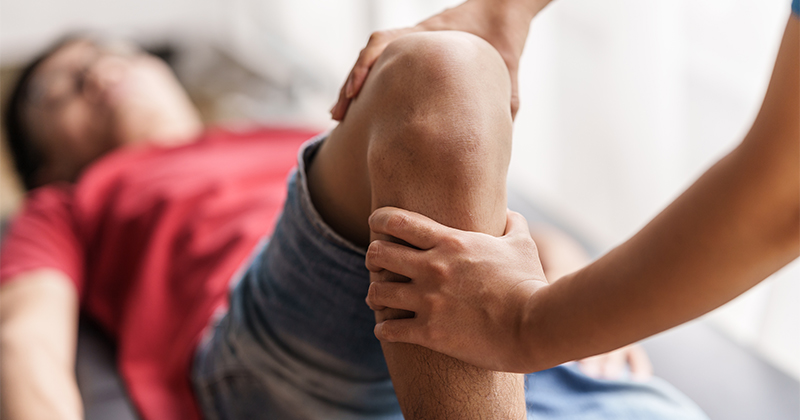Predicting injury: Health and Kinesiology researcher focuses on factors influencing tendon health for individuals with diabetes
Written By: Rebecca Hoffa, rhoffa@purdue.edu

More than 38 million Americans, or roughly 11.6% of the U.S. population, have diabetes, according to the Centers for Disease Control and Prevention, and the disease has considerable symptoms throughout the body — including tendon issues.
Chad Carroll, an associate professor in the Purdue University Department of Health and Kinesiology, was awarded a more than $3 million five-year R01 grant from the National Institutes of Health to look deeper into the issue. In his project, Carroll will take a multifaceted approach toward understanding how advanced glycation end-products, or sugar-modified proteins in the body, cause structural changes in the tendon and make it less resilient, particularly in patients with diabetes.

Chad Carroll(Photo provided)
Advanced glycation end-products are sometimes called “glycotoxins” due to the health complications they can exacerbate. Carroll noted that individuals with Type 2 diabetes often have a “perfect storm” brewing inside their bodies from poor dietary habits and lack of physical activity that can result in the accumulation of these sugar-modified proteins in the blood. Individuals with diabetes also often have a reduced ability to clear the modified proteins compared to individuals without diabetes.
The study originated from data collected in isolated tendon cells and aims to translate those findings to real-world prevention strategies, using both a preclinical mouse model and human participants. Through magnetic resonance imaging (MRI) and ultrasound imaging to measure tendon structure and function and blood samples to measure the levels of the advanced glycation end-products and other compounds, Carroll’s team hopes to predict tendon properties to help diagnose complications sooner.
“Not only are diabetic patients at risk for tendon injuries, but they also often have more tendon issues, which they may not know about,” Carroll said. “If you’re a patient with diabetes and have these other blood-marker levels, maybe we need to get you doing something to try to prevent an injury.”
Carroll is working closely with collaborators in Purdue’s departments of Biomedical Engineering and Animal Sciences and individuals at the University of Michigan, the University of Pennsylvania, and the Indiana University School of Medicine on the study.
“The unique aspect of the grant was that we included human, mouse and cellular studies,” Carroll said. “We’re recruiting patients and healthy individuals across ‘the diabetic spectrum,’ based on hemoglobin A1C, a common way to diagnose someone with diabetes. It’s a really cool grant from the standpoint of doing a bench-to-bedside approach.”
This work expands on a paper published online in February, looking at how properties in the blood affect tendon issues. The paper suggests that certain compounds in the blood could predict tendon properties and potential problems in patients.

Eric Gutierrez(Photo provided)
“What we need to understand now is how these things are really related,” Carroll said. “Is it just a fluke that these blood markers are related to your tendon, or is something more there? The idea of using a simple blood sample and basic information such as body weight, age and gender to get a pretty good idea of what your tendon properties are like is fascinating. I’m very excited about where that will go — we’ve still got a lot of research to do.”
Beyond individuals with diabetes, Carroll’s lab is also tackling tendon issues in other populations, expanding their work to examine how women’s tendons change from pre-menopause to perimenopause to post-menopause and the role estrogen may play in tendon health. Likewise, with the addition of Eric Gutierrez, a doctoral student in the College of Health and Human Sciences and active-duty U.S. Army major, since fall 2023, the focus has expanded further to soldiers and veterans, connecting Carroll’s work in civilian health to Gutierrez’s focus on soldier health.
“Through my time in the Army, I’ve had to lead soldiers and was in charge of ensuring their readiness across multiple different areas, such as physical training and health readiness,” Gutierrez said. “There’s a problem in the military with injuries, which I saw firsthand when I was a young commander, where we have to train our soldiers to be physically ready for the tasks that they need to accomplish, but as a result of that training, a lot of times, we injure them, and it creates a pretty vicious cycle of injury and reinjury and results in lower readiness, which we don’t want. There’s a natural overlap between musculoskeletal readiness and tendon injuries. They go hand in hand.”
As Carroll continues to expand his lab’s focus on how compounds in the body affect tendons, he’s already looking toward the future and making strides in predicting tendon outcomes across various populations.
“Our goal is to eventually take that to another level, where, in the next project, we will work with individuals with actual injuries and try to predict recovery times and injury risk based on clinical characteristics,” Carroll said.
Discover more from News | College of Health and Human Sciences
Subscribe to get the latest posts sent to your email.